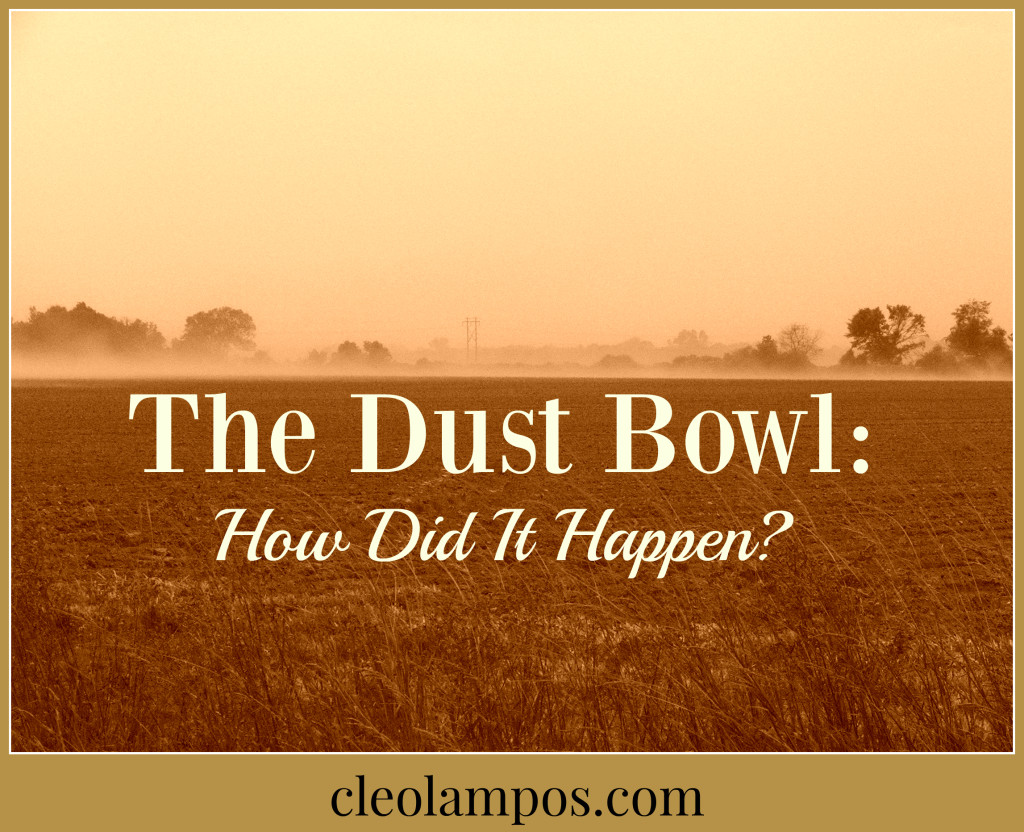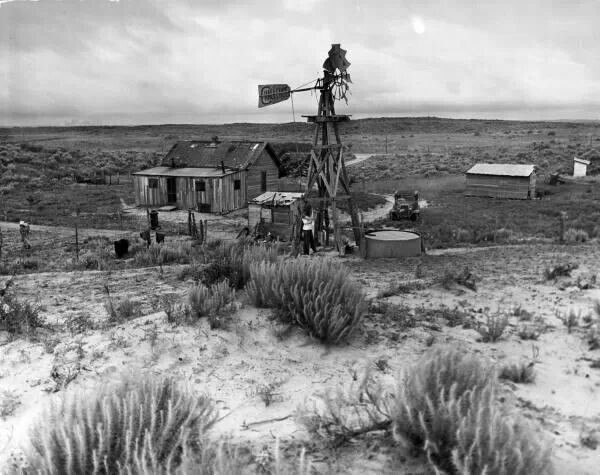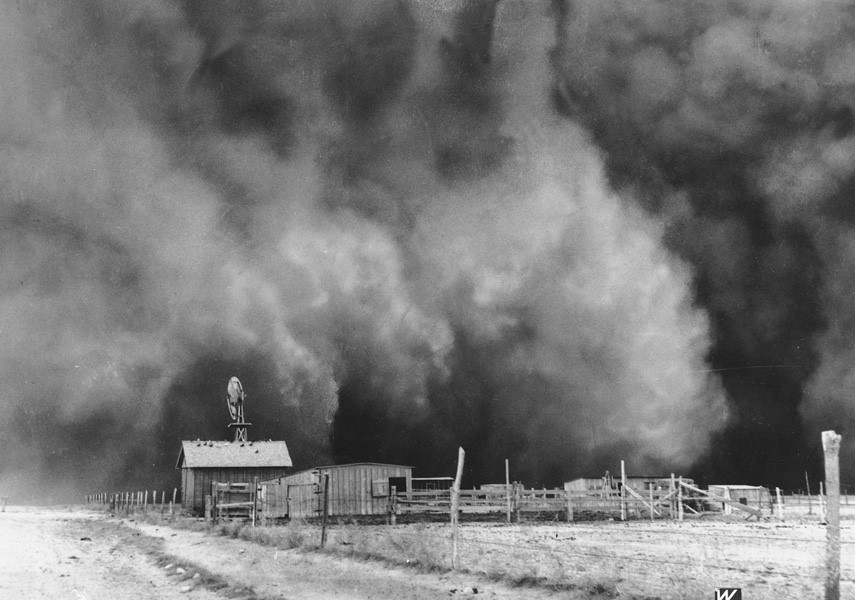Cleo Thoughts, Dust Bowl
The Dust Bowl: How Did It Happen?
 Childhood memories
Childhood memories
Living in Greeley, Colorado, as a child, water conservation made perfect sense. My mother used a wringer washing machine with two tubs of rinse water. After hanging the wet clothes on the lines, she emptied the tubs by carrying buckets of the water to the strawberry bed, the potato patch and the pea vines climbing on strings alongside the house. Not a drop was wasted. Not a blade of grass grew in the back yard. Only in the front, where it held down a small patch of dirt. The back yard yielded to my old spoons and other utensils as I made mud pies and built roads in the sandy soil. When dusty winds kicked up, I knew to pull a kerchief over my nose and mouth to prevent suffocation. My life as a youngster in mid-century drew from hard earned knowledge carved by the Black Blizzards of the 1930’s.
Epicenter of the Dust Bowl
Greeley is a city on the cusp of the Dust Bowl. The primary impact of the devastating Black Blizzards was on the southern plains of Kansas, the Oklahoma Panhandle, northern Texas, and western Colorado. The effects of the dust storms ranged all across the Great Plains from New Mexico to the Dakotas. The area suffered for a decade from the yellowish-brown haze from the South to the rolling walls of black dust from the North. The drought and windblown dust created agricultural decline which buried the farmers and ranchers in mounds of debt. That resulted in bank foreclosures. Those who stayed on the semi-arid land hung onto their sanity and homesteads with scraping fingernails.
Warnings Unheeded
The Dust Bowl should never have happened. The Native Peoples warned the suitcase farmers not to plow the earth. The old time cattle ranchers talked about native grasses’ holding the soil. But the lure of easy money drove easterners to invest in tearing up the sod to plant wheat. Their poor agricultural practices and years of sustained drought predicted by the Native Peoples caused the Dust Bowl. The ground that held the soil in place had been plowed up. There was nothing to stop the plains’ winds from whipping across the fields and rising in dark roiling clouds of dust. The skies darkened for days at a time. Year after year. Even sealed houses had thick layers of dust on everything. Electrical shocks were produced by the dust on metal. Cows suffocated in the storms. Grown men lost all hope, women stared with dry eyes at the sand piles covering their chicken coops. Some succumbed to despair. All that flourished were the unrelenting dust, the swarms of jackrabbits, tumbleweeds and desperation.
The Cost of Greed
Greed. That is the bottom line to why the dust bowl emerged. Those who had lived on the land, learned the rhythms of the rain, and respected the nature around them warned the big investors of the consequences of their money motivated actions. As an adult, looking back at the period of time in the 1930 to 1939, it is not surprising why mankind ended up in a mess. The question became just one: how to get out of it and reclaim the creation.
This is a series of blogs about the Dust Bowl. The next installment will tell about the men who learned how to reclaim the soil and turn around a horticulture catastrophe.
In the fall of 2016, an historic novel set in this era will be published. Dust Between the Stitches, by Cleo Lampos.
In the time of deepest need, musicians pour out their hearts in a way to bring comfort to the distressed. Thomas Mosie Lister wrote a song, “’Til the Storm Passes By”. Imagine sitting in a Black Blizzard where you cannot see your hand in front of your face. Read the lyrics from an online source, and feel God’s arms wrap around you.


